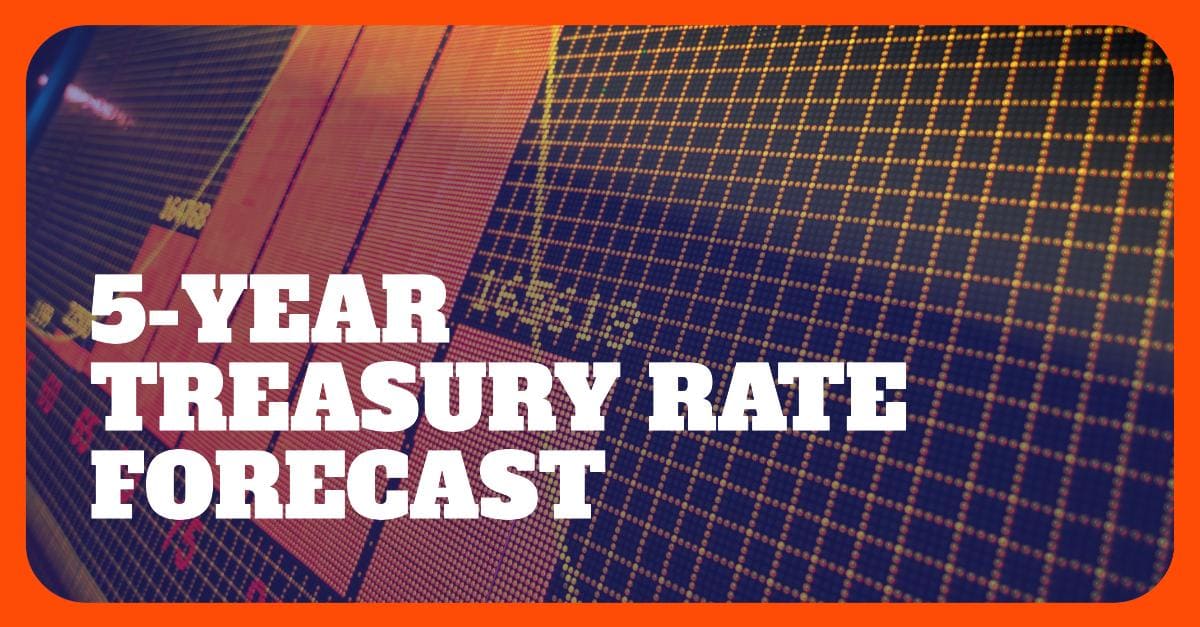
The 5-year Treasury rate is a critical economic indicator that reflects the market’s expectations for interest rates and inflation in the medium term. It influences various financial aspects, from mortgage rates to the returns on savings accounts. Economists are divided on the future of the 5-year rate. Some predict a continued rise as inflation remains a concern. Others believe the Fed might slow down its tightening if economic growth falters.
Two main forces are currently tugging on the 5-year Treasury rate in opposite directions:
- Inflation: If inflation is on the rise, the Federal Reserve (Fed) is likely to raise interest rates to cool things down. This, in turn, would push up Treasury yields (including the 5-year rate) as investors seek higher returns to keep pace with inflation.
- Economic Growth: On the other hand, a slowing economy could lead the Fed to ease off on interest rates, potentially causing Treasury yields to dip. Investors might be more willing to accept lower returns on safe-haven Treasuries if economic worries mount.
Forecast Overview
According to the Financial Forecast Center, the 5-year Treasury rate is expected to see a fluctuation in the coming months, with a forecasted value of 4.20% in March 2024, peaking at 4.45% in April 2024, and then showing a gradual decrease to 3.33% by October 2024. This forecast suggests a volatile period ahead for the 5-year Treasury rate, reflecting the uncertainties in the economic environment.
Econforecasting.com provides a market consensus forecast, which is generated primarily using yield data, futures market prices, and survey data. Their model, updated daily, offers a median expectation of market participants, indicating a keen insight into the collective market sentiment.
World Government Bonds forecasts a slight increase in the yield, expecting it to reach 5.017% by the end of September 2024, followed by a minor decrease to 4.982% by December 2024. This forecast aligns with the general expectation of a rising trend in the short term, followed by stabilization.
Understanding the Factors Influencing the 5-Year Treasury Rate
The 5-year Treasury rate is a significant benchmark in the financial world, reflecting the cost of borrowing for the US government over a medium-term horizon. It’s also a barometer of investor sentiment and economic expectations. Several key factors influence the movement of the 5-year Treasury rate, and understanding these can provide insights into the broader economic landscape.
Interest Rates
Interest rates are a primary driver of Treasury yields. The Federal Reserve’s monetary policy, especially the federal funds rate, plays a crucial role in shaping the interest rate environment. When the Fed adjusts its key interest rate, it directly impacts the demand for Treasury securities. Lowering the interest rate tends to increase demand for Treasuries, pushing prices up and yields down, and vice versa.
Inflation
Inflation is another critical factor affecting Treasury rates. Inflation erodes the purchasing power of fixed-income returns, making Treasuries less attractive when inflationary pressures rise. Consequently, higher inflation expectations lead to higher yields, as investors demand greater compensation for the decreased purchasing power of future cash flows.
Economic Growth
The state of economic growth influences investor confidence and risk appetite. Strong economic growth tends to boost investor optimism, leading to a preference for riskier assets over safe-haven securities like Treasuries. This shift can result in higher Treasury yields as prices fall due to decreased demand. Conversely, economic slowdowns often lead to lower yields as investors seek the safety of government-backed securities.
Quantitative Easing and Tightening
Central bank policies, such as quantitative easing (QE) and quantitative tightening (QT), also impact Treasury yields. QE involves the central bank purchasing long-term securities to inject liquidity into the economy, which can lower yields. QT, on the other hand, entails selling these securities, potentially leading to higher yields as the supply of Treasuries increases.
Budget Deficits
The size of the government’s budget deficit can influence Treasury rates. Larger deficits may require increased issuance of Treasury securities to finance the shortfall, potentially leading to higher yields due to the greater supply. Conversely, smaller deficits can lead to lower yields as the supply of new Treasuries decreases.
Global Market Dynamics
International economic conditions and cross-border capital flows can also affect Treasury yields. For instance, if foreign investors view US Treasuries as a safe investment amid global uncertainty, their increased demand can drive prices up and yields down. Conversely, if global investors seek higher returns elsewhere, this can lead to lower demand for Treasuries and higher yields.
These factors are interconnected and can influence each other, creating a complex web that determines the direction of the 5-year Treasury rate. Investors and policymakers must consider these dynamics when making decisions, as they can have far-reaching implications for the economy and financial markets.
It’s important to remember that forecasts and analyses are based on current information and can change with new economic data or global events. Therefore, staying informed with the latest economic trends and market research is essential for anyone involved in financial planning or investment.
In summary, the 5-year Treasury rate is shaped by a multitude of factors, including monetary policy, inflation, economic growth, central bank actions, budget deficits, and global market conditions. Understanding these influences can help navigate the complexities of the financial markets and make more informed decisions.









